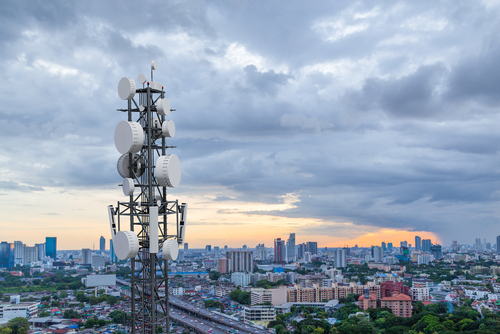If cell phone radiation effects on human body 've ever walked through a city, you may have seen tiny 5G cell towers placed on poles for street lighting. They look like little boxes, but they're actually broadcasting wireless signals from mobile providers to your phone.
These smaller towers are replacing the larger built cell towers. While they're not as noticeable, they still can create problems for those who live nearby.
The FCC's Radiation Exposure Thresholds
The FCC's Radiation Exposure Thresholds define the maximum amount of time one can expose to electromagnetic energy from wireless devices. The exposure limits are based on research that show that RF energy could be harmful to human health.
The rate of absorption called the specific absorption rate (SAR) is a measure of the radiofrequency energy absorbed by tissue. It's typically 1.6 watts per kilogram, spread over a gram of tissue.
However, because 5g transmits at higher frequencies, it has the potential to create more energy on the skin and other exposed body areas. This can result in various potential harms, including exacerbated development of skin diseases like dermatitis, cancer of the skin and cataracts.

Due to the possible severe effects of 5g radiation, PSU has chosen to create a general maximum power density of four MW/cm2 based on the average across 1 centimeter, and never to exceed 30 minutes, for the entire 5G spectrum at 3000 GHz. This limit for localization is in line with the maximum SAR spatial-average of 1.6 W/kg, averaged over one grams of tissues at six GHz.
The FCC's Maximum Exposure Thresholds for Maximum Exposure
Have you ever used a cell phone, you're probably aware that the safest range from the tower is around 400 meters away. This is because the power of the transmission of a cell tower increases dramatically the farther you are from it.
While it sounds like a good idea, the reality is that people who live close to towers might be more susceptible to health issues. For example, a study from 2014 in India discovered that people who lived within 50 meters from cell towers suffered significant more health issues than those living further distance from them.
However, this study also found that people who moved into areas farther away from cell towers noticed their symptoms return to normal within a few days. https://ctxt.io/2/AACQLFzAFA have also revealed that exposure to high amounts of electromagnetic field radiofrequency (EMFs) could cause brain tumors, cancers and other health issues.
This is due to the fact that the RF radiation utilized in wireless communications, can penetrate the human body's outer layer, called the skin. This is important to understand because the skin acts as a barrier to protect against injury to the body, infection by pathogenic microorganisms, and the entry of harmful substances. Additionally, it is the biggest organ in the human body. It is accountable for protecting other organs.
Additional resources on numerous assumptions that are not supported by scientific research. These include the erroneous assumption that short-term exposures to RF radiations are not harmful due to the limited penetration into the body (i.e. the heating of tissues).
This assumption does not take into account the more extensive penetration of ELF components of modulated RF signals and the consequences of short bursts of heat generated by RF waves that are pulsed. These assumptions do not correspond with current understanding of the biological consequences of RF radiation. As such, they should not be relied upon for health-protection exposure standards.
In addition, the ICNIRP and FCC limit the maximum limits of exposure to peak local SARs based on the maximum frequency of absorption (psSAR) that is an inadequate dosimetric tool to determine the degree of exposure to RF radiation. Particularly, psSAR is inaccurate for frequencies that exceed 6 GHz. Furthermore, psSAR has not been tested for RF radiation that is exposed to other environmental agents , such as sunlight. In the event of interactions, RF radiations with different environmental agents may result in antagonistic or synergistic results. This could result in an increased risk of adverse health adverse effects. For example, exposure to RF radiation and sunlight could raise the chance of skin cancer, and may also exacerbate other skin conditions like acne.
